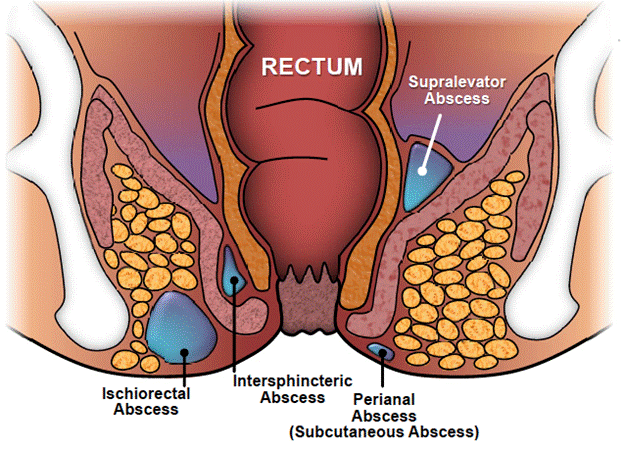Welcome to Piles and Hernia Center
Get back to doing what you love. We have more experience, more treatment options and better results for your Piles and hernia care. Call 04 379 8747 to set up an appointment today!

Get back to doing what you love. We have more experience, more treatment options and better results for your Piles and hernia care. Call 04 379 8747 to set up an appointment today!
You should be able to go home the same day or the day after your incision and drainage abscess procedure, depending on the anesthesia required. Subsequent dressings are requied at intervals of 2-3 days.
You may be given antibiotics that you should take as prescribed.
If you need pain relief you can take over-the-counter pain relief as required.
Your wound will take one to two weeks to seal over and heal.
Your doctor will let you know when you can return to work.
An anal abscess is an infected cavity filled with pus found near the anus or rectum. Ninety percent of abscesses are the result of an acute infection in the internal glands of the anus. Fecal matter and bacteria clog the internal anal glands and cause the secretions of the gland to well up inside. This then tracks through the surrounding fat tissue of rectum and anal canal until it reaches the skin. As the skin is a tough structure, it cannot break through and hence collects underneath to form an abscess.
Anal abscesses are classified by their site of location.

fistulous tract. The definitive treatment involves excision of both openings with the tract.
Signs and Symptoms of abscess
Abscess usually present with cardinal signs of inflammation – pain, swelling, redness and increased local temperature. Some of the patients may not have an external swelling if the abscess is deep seated and hence thorough examination is of utmost importance. Many a times, these external swellings in the anal region are misdiagnosed as piles, especially if not examined well or missed, and hence the patient ends up with wrong treatment thus further complicating the disease and its outcome. A digital perrectal check up completes the examination.
TREATMENT
The treatment of an abscess is surgical drainage under most circumstances. An incision is made in the skin near the anus to drain the infection. This can be done in a doctor’s office with local anesthetic or in an operating room under deeper anesthesia, depending on the size, site and other patient related factors.
Patients with Diabetes and other related comorbidities, immunocompromised would mandate an admission.
Up to 50% of the time after an abscess has been drained, a tunnel (fistula) may persist, connecting the infected anal gland to the external skin. This typically will involve some type of drainage from the external opening. If the opening on the skin heals when a fistula is present, a recurrent abscess may develop. Until the fistula is eliminated, many patients will have recurring cycles of pain, swelling and drainage, with intervening periods of apparent healing.
Antibiotics alone are a poor alternative to drainage of the infection. They complement surgical drainage. Only in those very early abscesses antibiotics alone would suffice. Hence early visit to the doctor could help prevent surgery.
For more information about anal abscess surgery, call 04 379 8747.